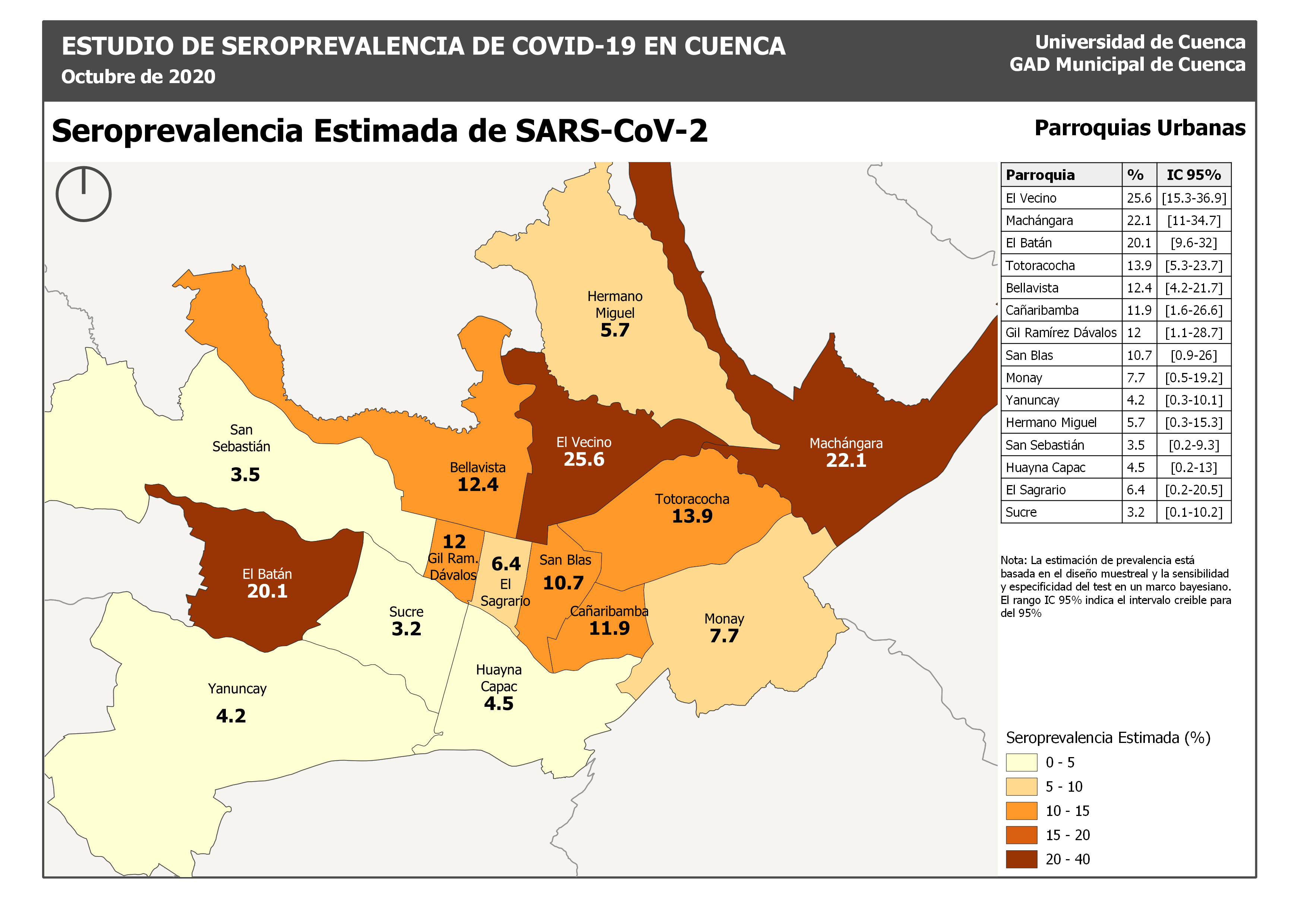Seroprevalence of SARS-CoV-2 infection, a cross sectional study. Cuenca – Ecuador, October 2020
DOI:
https://doi.org/10.18537/RFCM.39.01.01Keywords:
seroepidemiologic studies, SARS virus, coronavirus infections, SARS-CoV-2, social classAbstract
Objective: to establish the seroprevalence of SARS-CoV-2 infection in Cuenca canton and its demographic and socioeconomic distribution.
Methodology: It is a cross-sectional study developed in Cuenca, It is based on a stratified randomized two-stage sampling with representation of all urban and rural parishes of the canton, with a total of 2457 participants. A survey was carried out for each household with sociodemographic and behavioral information, antibodies for SARS-CoV-2, IgM and IgG in blood were detected by acupressure.
Results: a seroprevalence of 10% was estimated, (8.4% to 11.6%), with no statistically significant difference by sex and between the urban area as a whole vs. the whole of the rural area. The rural parishes Tarqui (38.8%), Checa (36.4%), have seroprevalences almost three times higher than the cantonal average. At a lower level of education, seroprevalence is higher, with a p value <0.001. Households with incomes below $ 200 have a higher prevalence of 12.99% (95% CI: 8.12-18.19), than households with incomes above $ 1500 with 4.74% (95% CI: 0.26-12.4).
Conclusions: in Cuenca, one out of every 10 people has antibodies against SARS-CoV-2, the distribution of the disease shows differences in behavior by educational level, parish, income and work occupation.
Downloads

Published
Issue
Section
License
Copyright (c) 2021 David Acurio-Páez, Dr., Andrea Ximena Gómez-Ayora, Dra., Daniel Orellana, PdH, Bernardo Vega, Dr., Ricardo Charry, Dr.

This work is licensed under a Creative Commons Attribution-NonCommercial-ShareAlike 4.0 International License.
Copyright © Autors.

You are free to:
 |
Share — copy and redistribute the material in any medium or format |
 |
Adapt — remix, transform, and build upon the material for any purpose, even commercially. |
Under the following conditions:
 |
Attribution — You must give appropriate credit, provide a link to the licence, and indicate if changes were made. You may do so in any reasonable manner, but not in any way that suggests the licenser endorses you or your use. |
| NonCommercial — You may not use the material for commercial purposes. | |
| ShareAlike — If you remix, transform, or build upon the material, you must distribute your contributions under the same license as the original. |
| No additional restrictions — You may not apply legal terms or technological measures that legally restrict others from doing anything the licence permits. |





